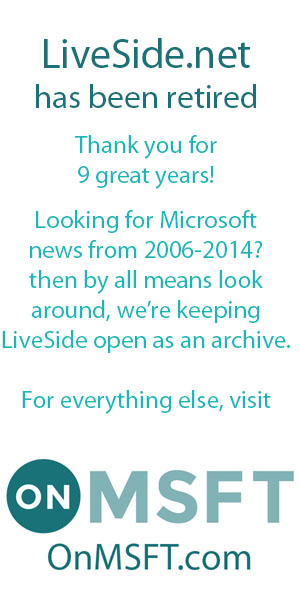 Today, on the Windows 8 blog, Steven Sinofsky introduces Katie Frigon, Group Program Manager of something called the “You-Centered Experience Team”, who then takes us through the way Windows Live ID will be integrated into Windows 8. Logging into a Windows Live ID in Windows 8 will save your Windows settings, your Metro style app settings, save sign in credentials for apps and websites, and automatically sign you into apps and services that use Windows Live ID authentication.
Today, on the Windows 8 blog, Steven Sinofsky introduces Katie Frigon, Group Program Manager of something called the “You-Centered Experience Team”, who then takes us through the way Windows Live ID will be integrated into Windows 8. Logging into a Windows Live ID in Windows 8 will save your Windows settings, your Metro style app settings, save sign in credentials for apps and websites, and automatically sign you into apps and services that use Windows Live ID authentication.
One change to the authentication service is apparent right off the bat: you won’t need to use a Hotmail or Live.com (or a Windows Live Admin Center) address, you’ll be able to use any email address (provided it can be authenticated). Frigon explains:
When you buy a Windows 8 PC and set up your user account for the first time, you can optionally choose to create an account that is associated to a Windows Live ID. You can either use an existing ID or create a new one. If you choose to create a new one, you can use any email address you want as your new ID, and then create your unique password. For example, you can use [email protected] or you can use [email protected]. You just need to identify an email address that you want to have associated with the Windows Live ID service, and provide a unique password.
(edit: as Jamie points out, this is not new, but maybe not a well known service. I was confusing a new email address with a new Live ID, my bad… kip)
After you create or associate a Windows Live ID, Windows 8 will be able to sync certain operating system settings, such as themes, language preferences, web browser settings, and more, and you will be able to control what, if anything, will be sync-able between Windows 8 computers. Privacy and security will be enhanced with Live ID, expanding on the “my friend’s been hacked” type features to change your account to a “compromised state” until you are able to re-authenticate using the two factor secondary proofs that you set up with the creation of the Live ID.
The settings you decide to sync are stored, separately from your SkyDrive documents (similar to how Internet Explorer and Office settings are now stored with Windows Live Mesh). One thing that isn’t clear is whether or not some of these settings will be able to work across Windows 8 and Windows 7, as not much has been said about backwards compatibility for synced settings. Obviously you wouldn’t be able to use your Metro style apps settings in Windows 7, but it would be inconvenient to have to reset IE or Office settings every time you move from a Windows 7 to Windows 8 machine. However, the blog post makes it clear that uses of this roaming data will be severely limited:
The data stored is not available to other Microsoft services or third parties. Lastly, before the sensitive information can be accessed on a second Windows 8 PC for the first time, you must establish “trust” for that PC by providing further proof of your identity. This further proof can be done by providing Windows with a code sent to your mobile phone number or by following the instructions sent to an alternate email address.
Any of the data that is saved to the cloud via the roaming mechanism is only accessed by Windows for roaming. This is very important. So for example, Internet Explorer’s history is saved as a roaming state but is not used or accessed in any other context—it is no different than if you had manually created that same record of website history on another PC.
While this all sounds great if you move all your PCs (and devices) to Windows 8, but we have lots of questions about how Live ID usage will change for Windows 7 users. Will all (at some point in the future) Windows Live IDs be able to use any available email address? Will settings such as IE and Office roam across versions of Windows? What new advantages will Windows Live ID provide if you’re not on Windows 8, if any? As usual, along with some answers and new information, there are lots of questions.

